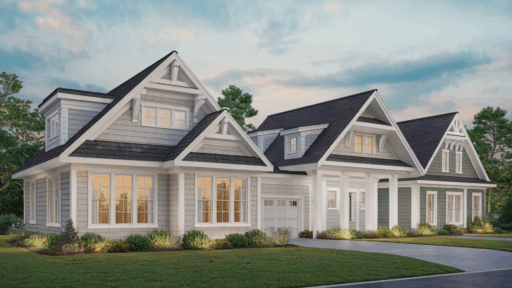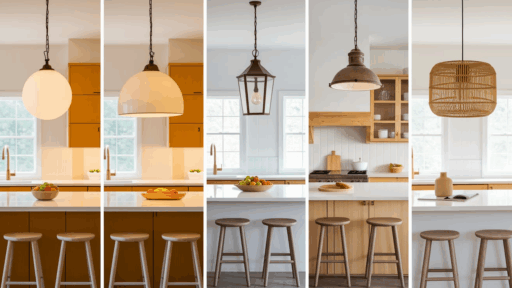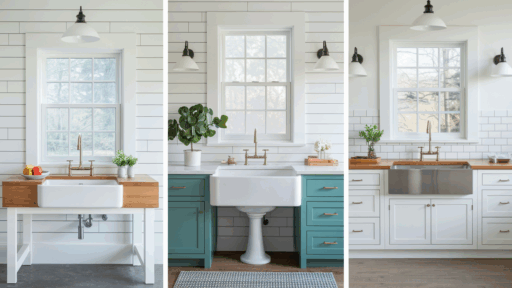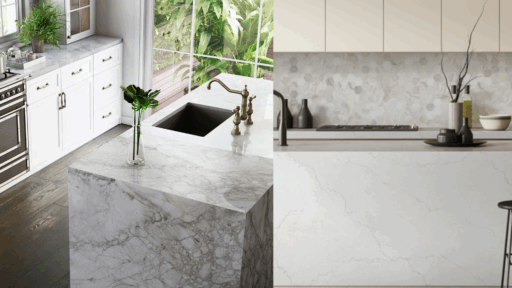Roofs do more than cover your home; they protect against the weather and help control indoor temperatures.
When I began researching roof styles, two common options emerged: hip roofs and gable roofs.
They might seem alike, but they differ in shape, strength, and cost. In this guide, I’ll break down how each one works, what it looks like, and which could be the better choice for your home.
No complex terms here, just clear, simple comparisons based on trusted info and personal research.
Your roof affects more than just its appearance; it impacts comfort, weather resistance, and long-term costs.
With the right details, you can select a roof that suits your space, budget, and needs. Let’s find the best one for you!
What Is a Gable Roof?
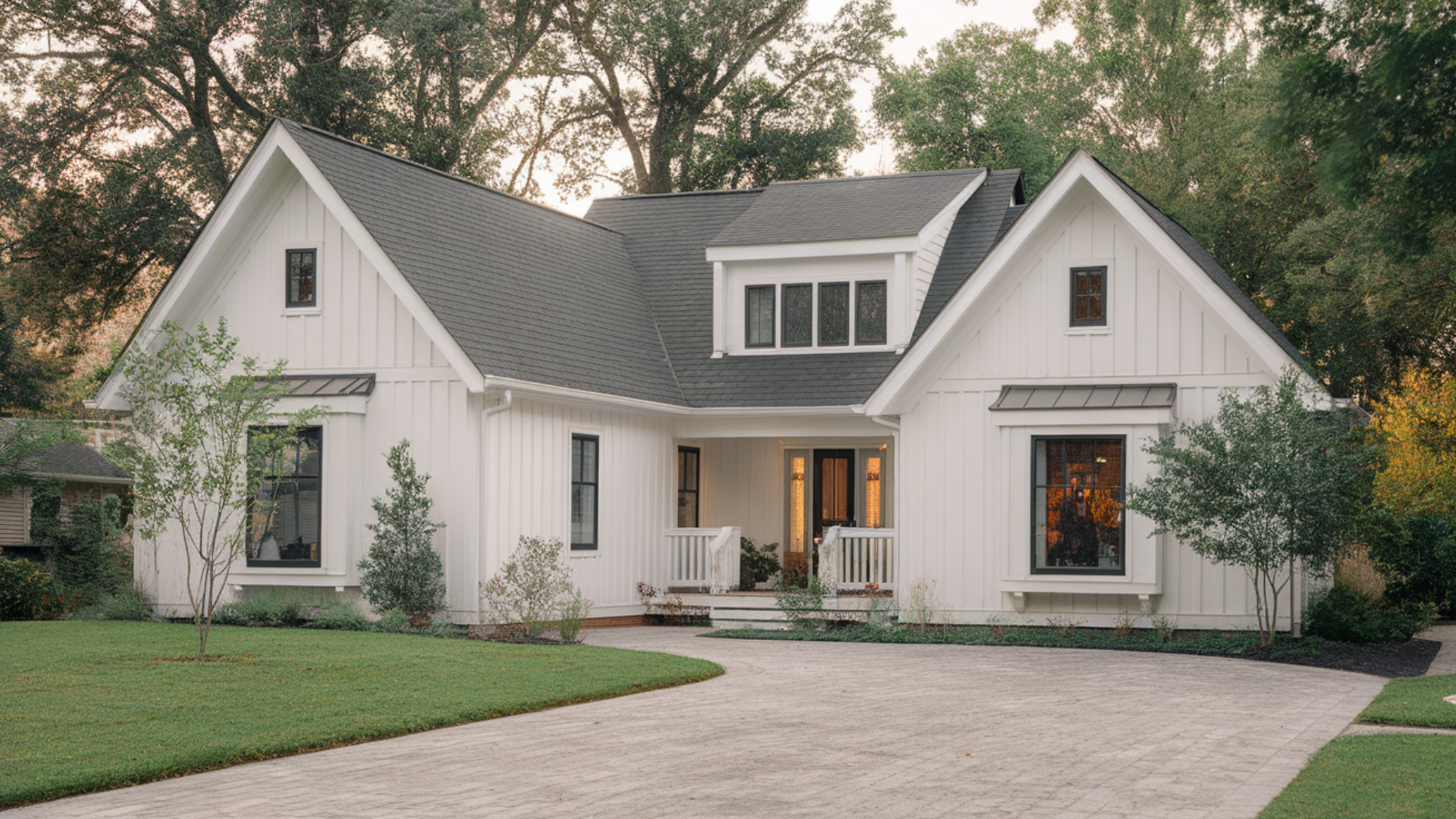
A gable roof is one of the most common roof styles for homes. It features two sloping sides that rise to meet at a central ridge.
The other two sides of the structure form vertical walls with a triangle shape at the top, this is the gable, which gives the roof its name.
Gable roofs are appreciated for their straightforward design, making them simple to construct and budget-friendly.
Their steep pitch helps rain and snow drain off easily, which is especially useful in areas with frequent rainfall or snowfall.
The shape also allows for extra space beneath the roof, often used for an attic. Additionally, gable roofs support good ventilation and air movement.
This roof style has been used for generations and remains a common choice in many regions due to its practical advantages and structural efficiency.
Pros of Gable Roofs
Gable roofs have remained a preferred choice in residential construction for good reason. Their familiar triangular shape is more than just about appearance.
It also offers practical benefits that suit a range of climates and home designs.
- Simple construction: The straightforward design utilizes fewer materials and is easier to build, often resulting in lower labor and material costs.
- Better airflow: The open space beneath the roof encourages natural air movement, helping reduce moisture and prevent damage.
- Extra attic space: The triangular shape creates more usable space under the roof, often used for storage or utilities.
- Fast water drainage: The steep angles allow rain and snow to run off quickly, reducing the risk of leaks or buildup.
- Common design: Gable roofs are widely used, making it easier to find materials and skilled labor for both new builds and repairs.
Cons of Gable Roofs
While gable roofs offer numerous advantages, they have limitations, particularly in areas with strong winds or frequent storms.
Understanding these potential downsides can help you plan more effectively and take the necessary precautions during the design and construction phases.
- Less stable in high winds: The open ends of a gable roof can act like sails, catching strong wind gusts. This makes the structure more vulnerable during storms, especially if not properly braced.
- May need extra support: In regions with frequent severe weather, additional framing or reinforcements may be necessary to reduce the risk of collapse or damage.
What Is a Hip Roof?
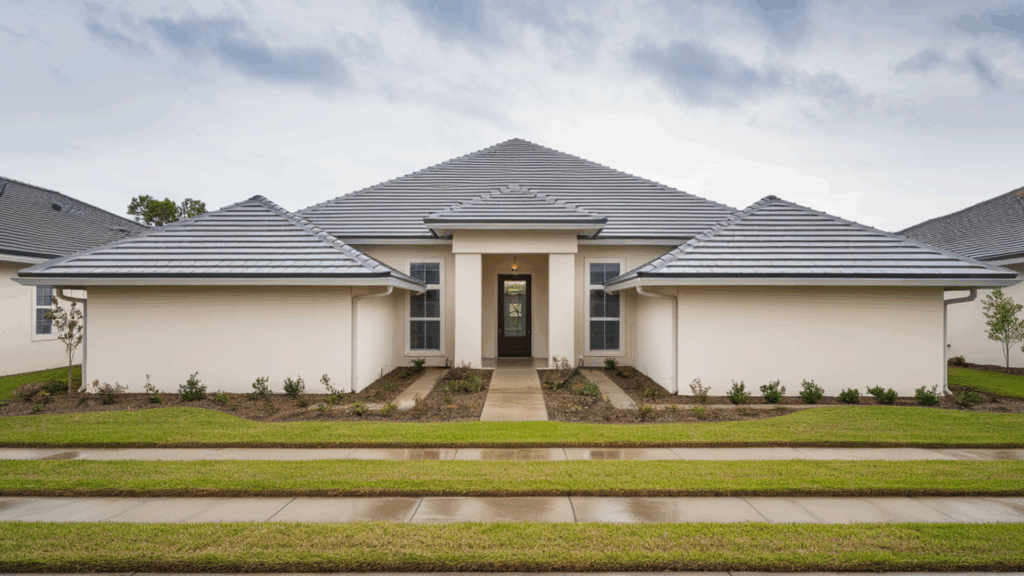
A hip roof is a type of roof where all four sides slope downward toward the walls, meeting at a ridge or a single point at the top.
Unlike a gable roof, there are no vertical sides; a sloped surface covers every exterior wall.
This structure gives the roof a balanced appearance and provides consistent coverage on all sides of the building.
Because all sections slope down, the design is generally more complex than a gable roof.
It requires more materials and precise framing, which can increase construction time and cost.
However, the shape also offers certain benefits, especially in areas prone to strong winds or heavy rain.
Pros of Hip Roofs
Hip roofs offer more than just coverage; they bring structural advantages that make them a solid option in certain climates and architectural plans.
Their shape provides balance and support that some other roof styles lack.
- Strong and stable: With four sloping sides, a hip roof offers improved resistance to strong winds. The inward slope on all sides adds strength, making it a reliable choice for areas prone to storms.
- Even roof overhangs: The uniform design creates consistent overhangs on all sides of the building. This helps shade windows and walls evenly, offering added protection from the sun and rain.
- Balanced appearance: The symmetrical layout often complements a wide range of home styles, appealing to homeowners who value both structure and curb appeal.
Cons of Hip Roofs
While hip roofs offer strength and a balanced appearance, they come with a few trade-offs that are worth considering, especially in terms of cost and construction complexity.
- More expensive: The design requires additional materials and labor, which can raise the overall cost compared to simpler roof types.
- Reduced attic space: Because all sides slope inward, there’s less usable space beneath the roof. This limits storage or room expansion options.
- Complex construction: Building a hip roof takes more time and technical skill. The added angles and joints require careful planning and execution to ensure proper fit and durability.
Key Differences Between Hip and Gable Roofs
Both gable and hip roofs offer distinct benefits, but they perform differently depending on your location, budget, and design needs. The table below highlights the main contrasts to help you compare both options side by side.
| Feature | Gable Roof | Hip Roof |
|---|---|---|
| Design | Two sloping sides with vertical gable ends | Four sloping sides that meet at the top |
| Stability in Wind | Less stable in high winds | More stable due to inward slopes |
| Construction | Simpler and faster to build | More complex, requires added effort |
| Cost | Generally lower | Often higher due to materials and labor |
| Attic Space | More space under the roof | Limited space due to all sloping sides |
| Drainage | Effective water runoff | Also offers good drainage |
| Appearance | Traditional, angular profile | Balanced, uniform look on all sides |
| Ventilation | Allows strong airflow in the attic | May need added vents to support airflow |
Variations of Each Roof Type
Several modified versions blend styles or enhance function. Below are some of the most common types found in residential architecture.
Gable Roof Variations
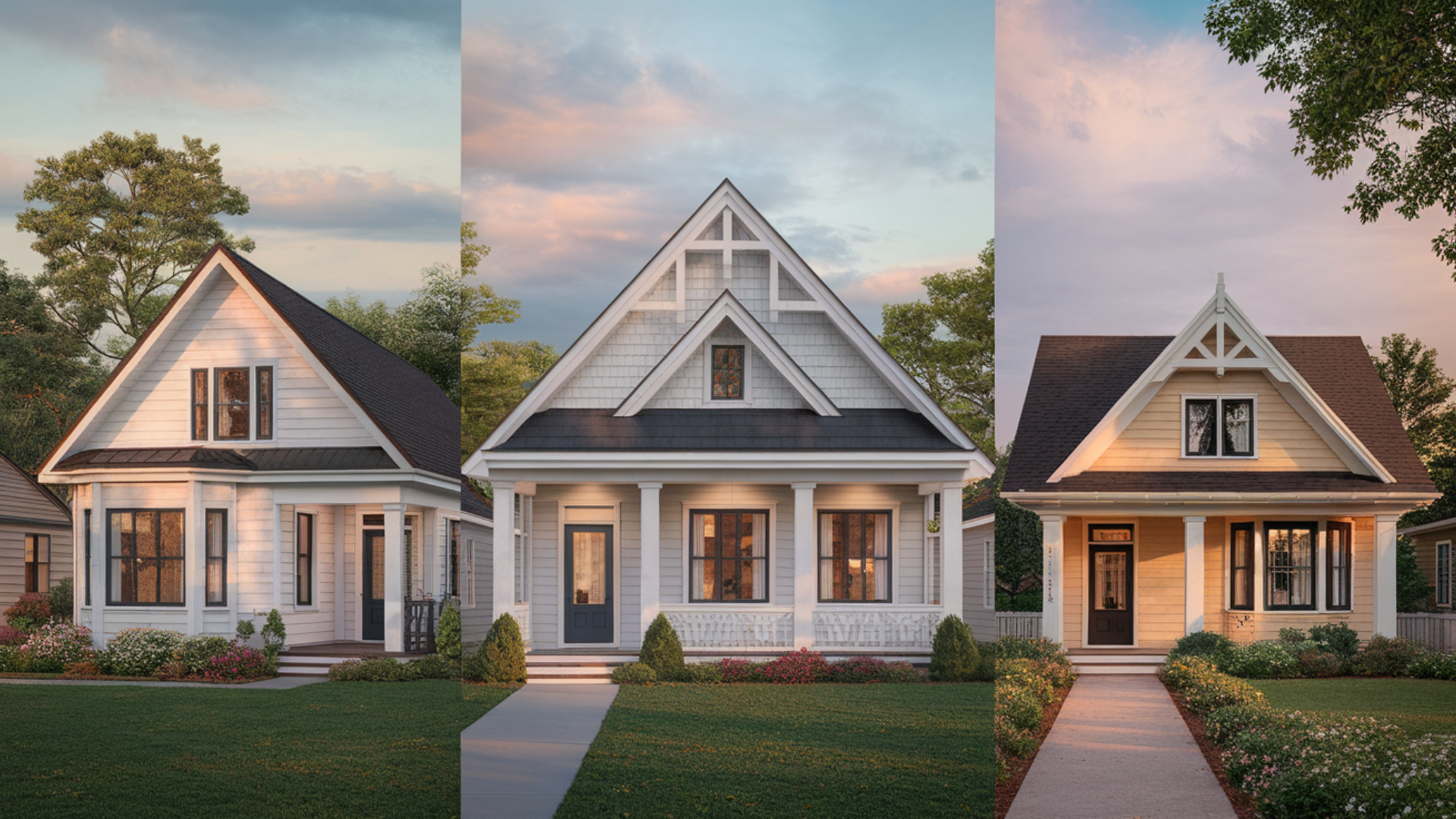
Gable roofs can be adapted in several ways to fit different home layouts and styles. These variations build on the standard two-slope design.
By adding new angles, connections, or blending with other roof types to increase function and visual balance.
- Box Gable: Gable ends are enclosed with walls that align with the roof edges, creating a clean and structured appearance. This style suits homes that emphasize symmetry and balance.
- Cross Gable: Two gable roofs intersect at a right angle, forming L- or T-shaped layouts. It’s common in larger homes and helps define different sections of the building.
- Dutch Gable: A small gable sits atop a hip roof, adding vertical space and improving ventilation while maintaining the strength of the hip structure
Hip Roof Variations

Hip roofs also come in various forms, each offering distinct advantages depending on the building’s shape and location.
These versions maintain the core strength of a hip roof while introducing changes to support more complex designs.
- Pyramid Hip: All four roof sides are equal in length and meet at a single high point, creating a compact, pyramid-shaped structure. This version is often used on square buildings.
- Cross Hip: Two hip roof sections intersect at a right angle, making it a good fit for homes with extensions or wings. It helps cover complex layouts while maintaining roof stability.
- Half-Hip: Combines features of both gable and hip roofs. The gable ends are partially covered by small hip sections, offering a balance between space and wind resistance.
Choosing the Right Roof for Your Home
The best roof for your home depends on several practical factors. In comparison, both gable and hip roofs have their strengths.
One may suit your specific needs better than the other. Consider the points below before making a decision:
- Climate: Hip roofs perform well in high-wind areas due to their sturdy, sloped design on all sides. Gable roofs are effective in snowy climates, as their steep slopes help snow slide off easily.
- Budget: Gable roofs usually cost less to build. Their simpler structure requires fewer materials and less labor.
- Attic Needs: If interior space is a priority, gable roofs offer more room under the roof, ideal for storage or extra insulation.
- Visual Preference: Both roof styles have distinct appearances. Select the one that best suits your home’s shape and design preferences.
Conclusion
Choosing between a hip roof and a gable roof is more than just about looks. I’ve found that each style offers different practical benefits depending on your home’s design and location.
Hip roofs bring strength and balance. They’re a solid choice if you live in a place with strong winds or frequent storms.
Gable roofs, meanwhile, give you more attic space and are usually easier and cheaper to build. Their steep slopes also help shed snow, making them ideal for colder climates.
When comparing roof styles, I consider cost, space, local weather conditions, and personal style. All of these matter when making the best decision.
The right roof does more than protect your house; it should also complement your home’s shape, meet your needs, and withstand the test of time.

